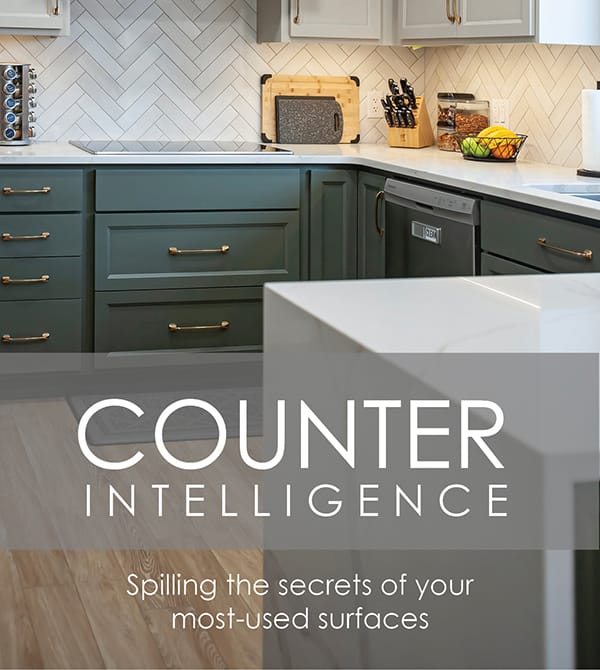Countertops are one of the most important and well-used surfaces in your kitchen and bathrooms. They take all the wear and tear of daily life, and choosing the right one for you is an important step to ensuring it fulfills its duty well. There are many different options available, and each has its own set of pros and cons. Here is an overview of five of the most popular countertop materials and some things to think about as you choose.
Countertop Option 1: Laminate Countertops
You can’t write an article about custom countertops without starting with laminate. Sometimes referred to by the more common brand names Arborite or Formica, laminate countertops are likely what most of us grew up with. They’re generally inexpensive, reasonably durable and over the years have expanded from the bland-colored countertops of our youth to include a beautiful selection of colors and patterns. From stone-like patterns to fun colorful prints, laminate countertops offer a personality that’s hard to find in some of the more natural-looking products.
Laminate is a thin manufactured product that is glued down onto particle board to create a smooth, flat surface that’s easy to clean, resists staining and requires virtually no maintenance. Definitely not heat-resistant, extra care should be taken with hot pots and dishes on laminate surfaces so you don’t end up with a scorched or melted section.
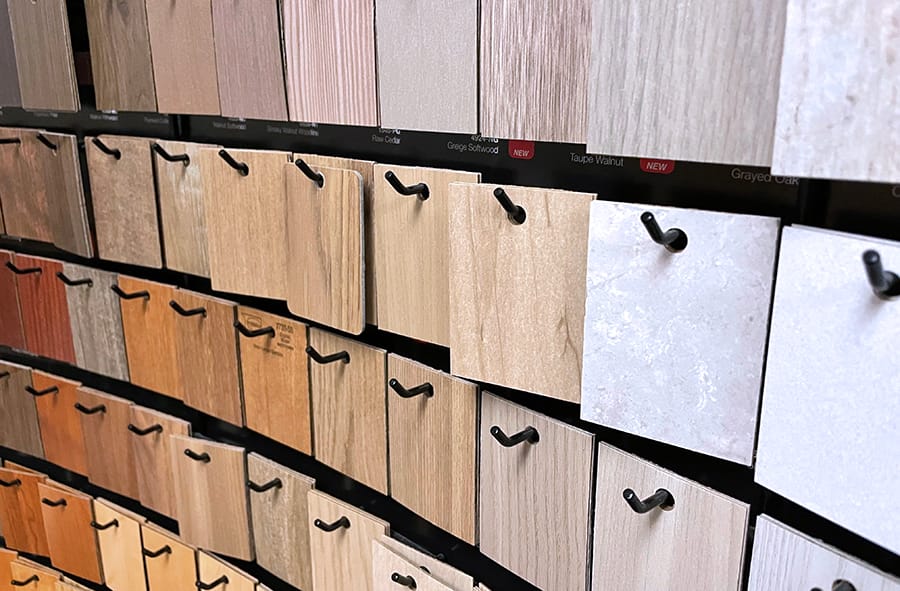
Countertop Option 2: Stone Countertops
Stone countertops have surged in popularity over the last 20 years or so, and have made a name for themselves due to their durability, heat resistance and beauty. With many different varieties, not all stone is created equal, but they do share some common characteristics.
Natural stone, like granite, marble, and quartzite are cut in quarries, polished, and then cut to shape from giant slabs. Each piece is unique and natural veins and variations are part of the charm. Because these are natural products, there is always the potential for weak spots and natural flaws, but a reputable dealer will inspect natural stone carefully to ensure those areas are avoided during fabrication. Manufactured products like quartz and porcelain are made to be consistent from slab to slab and come in many colors and styles.
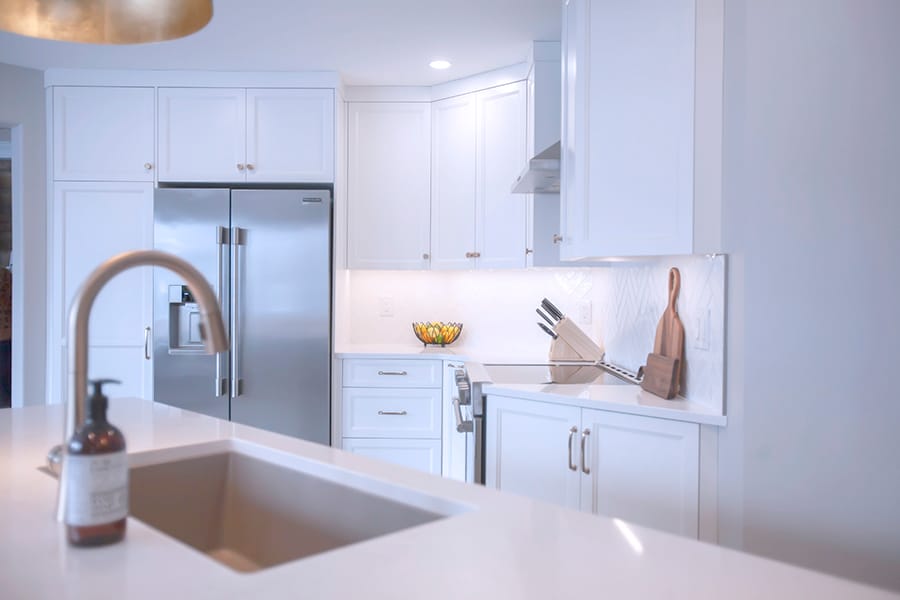
Regardless of which type you choose, stone surfaces are easy to clean and require minimal care. They can be fabricated with many different edge profiles and (depending on your kitchen) can often be cut to be seamless. If you tend to be a butterfingers, be aware, breakables won’t survive a drop onto a stone countertop, so be extra careful with your cherished dishes.
Stone is one of the most expensive options, but if you’re looking for smaller pieces it’s worth asking about remnants. Remnants are pieces that are leftover from other jobs and are portions of the full slab. They are often cheaper to purchase and have cut to size.
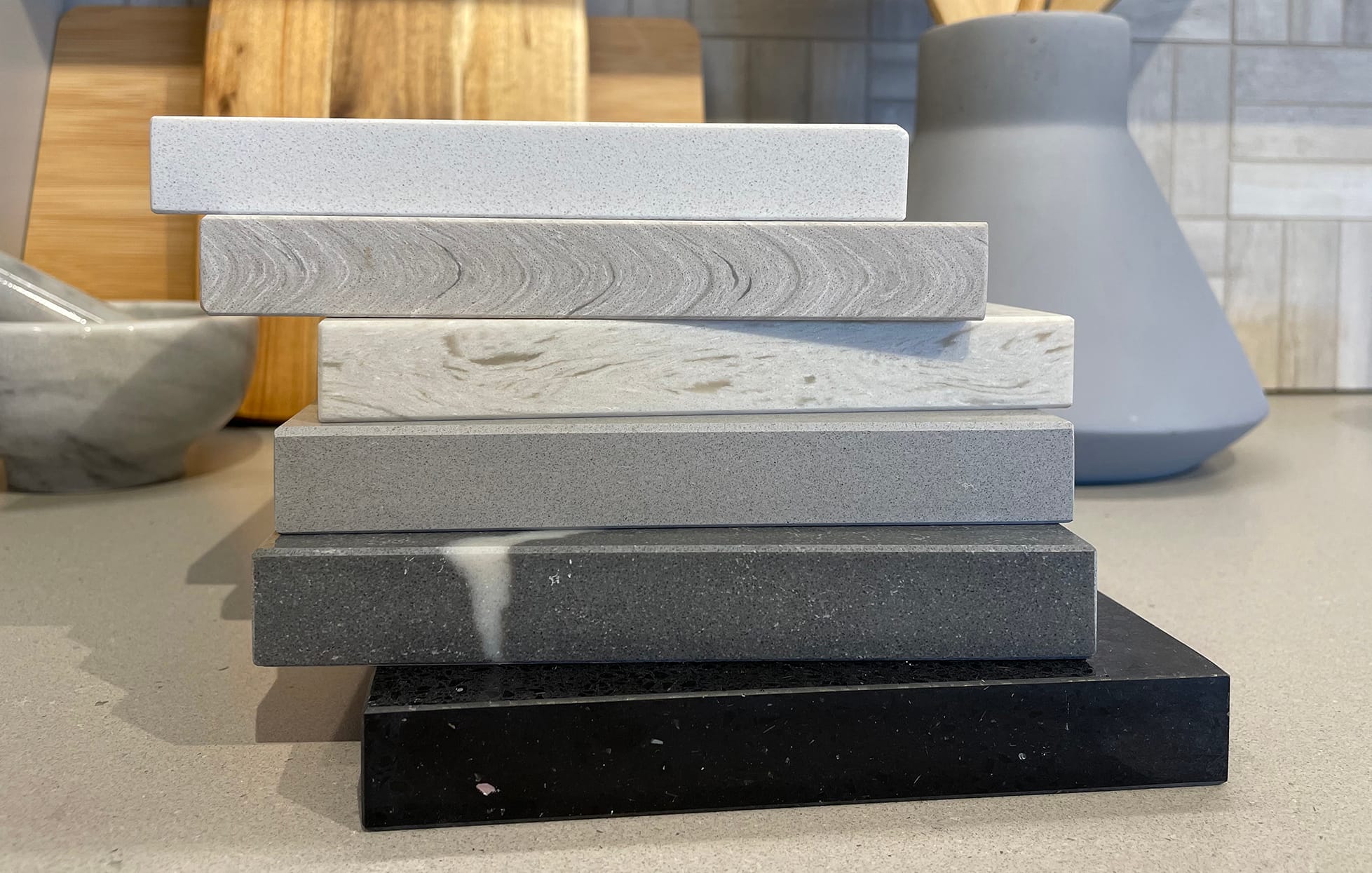
For more information on care and the differences between the types of stone, check out this article from our partners at Solid Stone Countertops.
Countertop Option 3: Wood/Butcherblock Countertops
Calling all chefs! If you love your knives, Butcher block is something to consider, even if only for a section of your countertops. Made of solid wood, butcher block is the only countertop surface that’s safe to cut directly on without damaging or dulling your knives. Of all the countertops, this one is easily the one that requires the most care, but if properly maintained, the butcher block is water-resistant and (surprising to some) naturally antibacterial! Many years ago, when plastic cutting boards were introduced, they were branded as the more sanitary option, causing many people to throw away their wood ones, but that may have been a bad decision. A study done by the Food Research Institute at the University of Wisconsin showed that wood cutting boards are safer than plastic ones when it comes to harboring microbes including E-Coli, listeria, and salmonella.
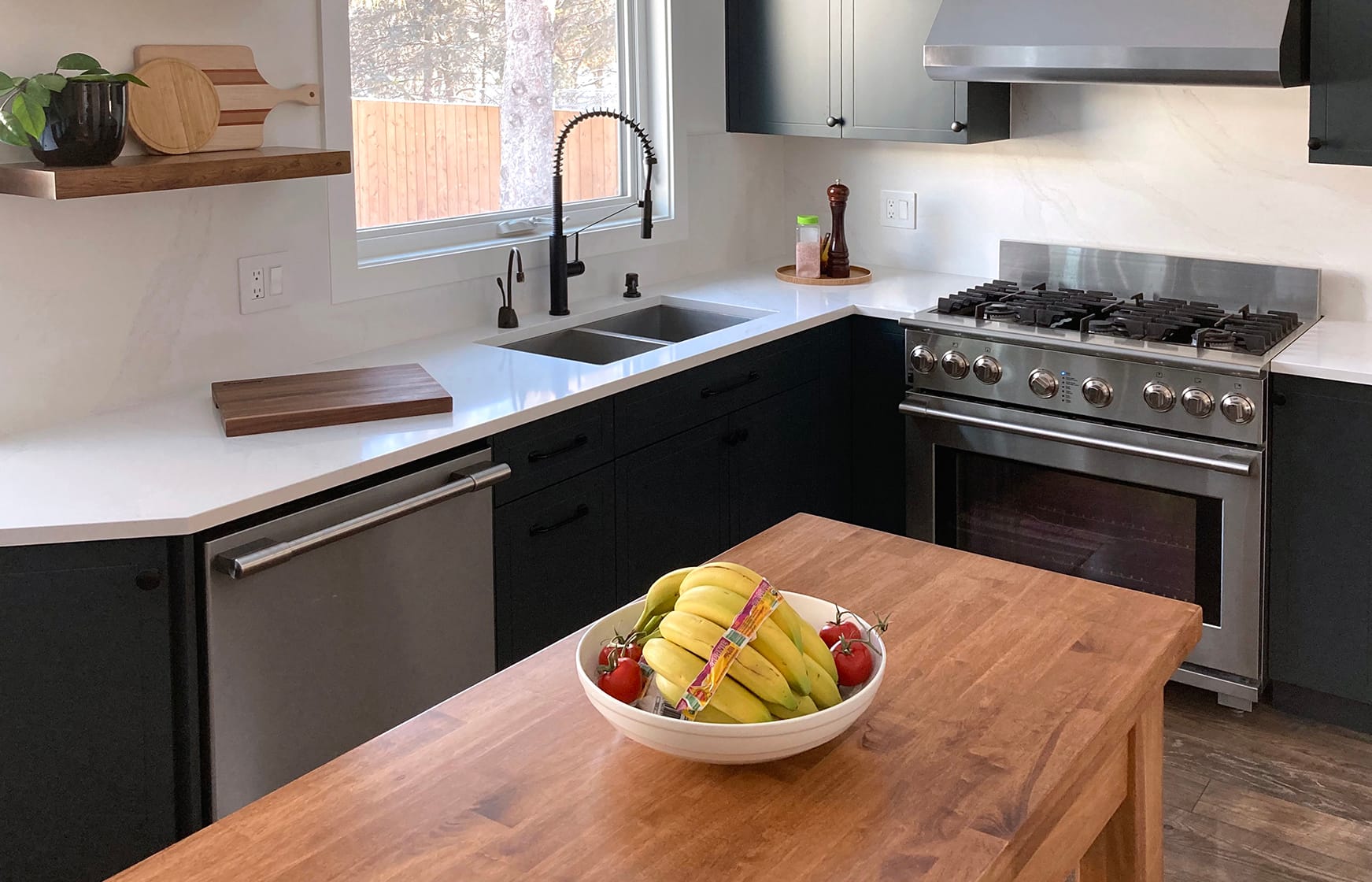
If you regularly use your butcher block counters as a cutting surface, you should expect some wear and tear, though, for many, this merely adds to the charm. If you find it’s wearing too much for your tastes, a light sanding and fresh oiling are all that’s usually necessary to bring it back to its best. If you think that you’ll be using your butcher block a lot, ask for “end-grain” wood. End-grain butcher blocks are made with the grain of the wood standing vertically, so what you see from the top is the ends of the boards. Making a countertop like this is the more expensive way to do it, but the grain functions in a way that it can almost heal itself back up when used as a cutting surface.
For more information on butcher blocks, and some stunning examples of what they can look like, check out this blog post from our partners at Superior Cabinets.
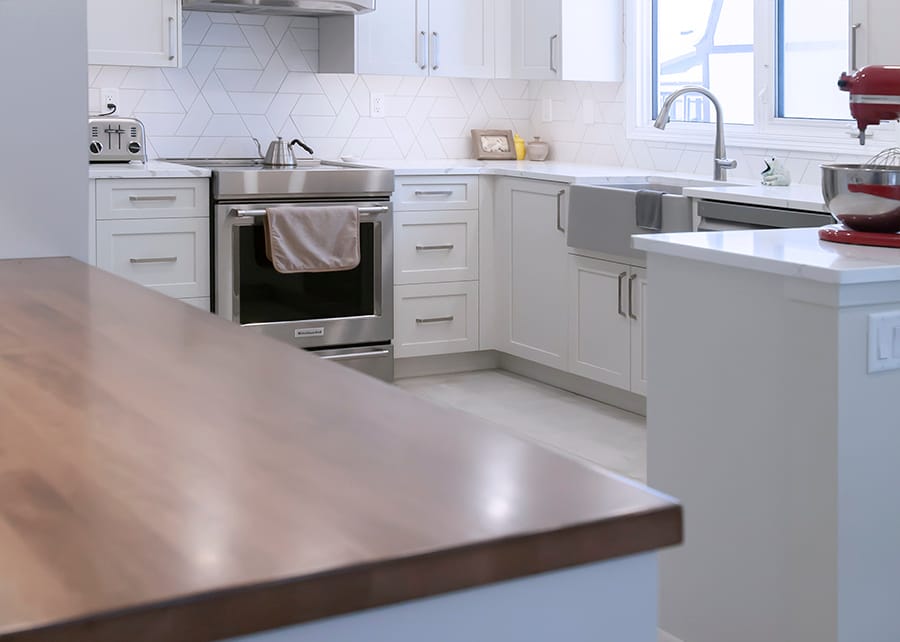
Countertop Option 4: Tile Countertops
Tile is generally inexpensive and when you look at the cost of butcher block, solid stone or full-slab porcelain, it can seem like a good option. It also feels somewhat less daunting to try to do yourself. While tile variety is endless, not all tile is suited to the wear and tear of countertop use and can chip or crack easily. While the tile itself is often non-porous, the same can’t be said for the grout. Grooves and texture are perfect places for bacteria to hide and grout can stain very quickly if not regularly sealed and maintained.
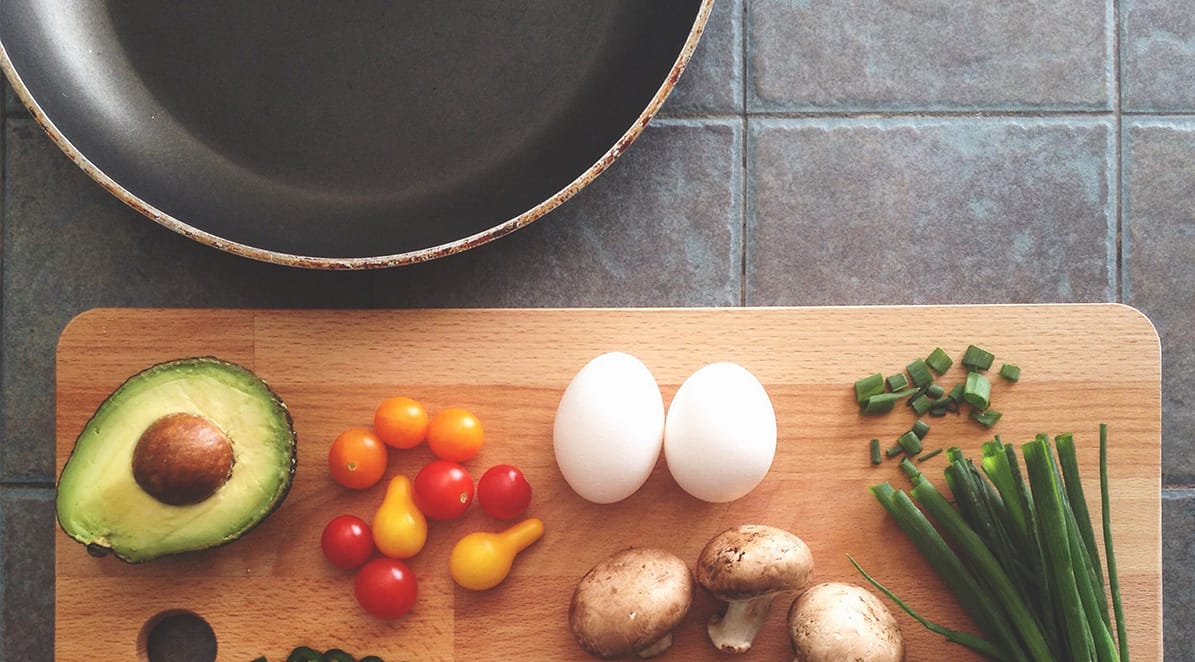
Understanding how you typically use your countertop is an important consideration too. If you enjoy baking, you likely won’t want tile, as kneading bread or rolling out cookie dough or a pie crust won’t work well. Also, tile may not end up perfectly straight due to variations in the grout beneath or the tiles themselves, so appliances that rely on a sturdy base (mixers, blenders, food processors) may not be as secure as you’d like.
Countertop Option 5: Concrete Countertops
Another idea for the DIY crowd is Concrete. Concrete is durable, hard, and can be customized to an almost infinite degree. From color to shape, texture, and finish, everything can be created to fit your vision. With the addition of glass or stone aggregate, or built-in drainboards beside the sink, concrete can be formed (get it?) to suit almost any use or style.
Before you get too excited by the possibilities, you should be aware of the downsides. Concrete is susceptible to cracking, and while cracks can be fixed, the mere fact they happened at all can cause some people grief. Staining is also possible, and while regularly sealing it with a good sealer will counteract much of it, you really need to be the type of person who likes a good patina to fully embrace concrete surfaces in your home. Even water stains can happen and you should be prepared for that.
While concrete seems like a cheaper option, that is only true if you’re planning on doing it yourself. Because of the hand-made nature of concrete, your labour costs will likely be higher than other types of countertop and may negate any savings you’d hoped for.
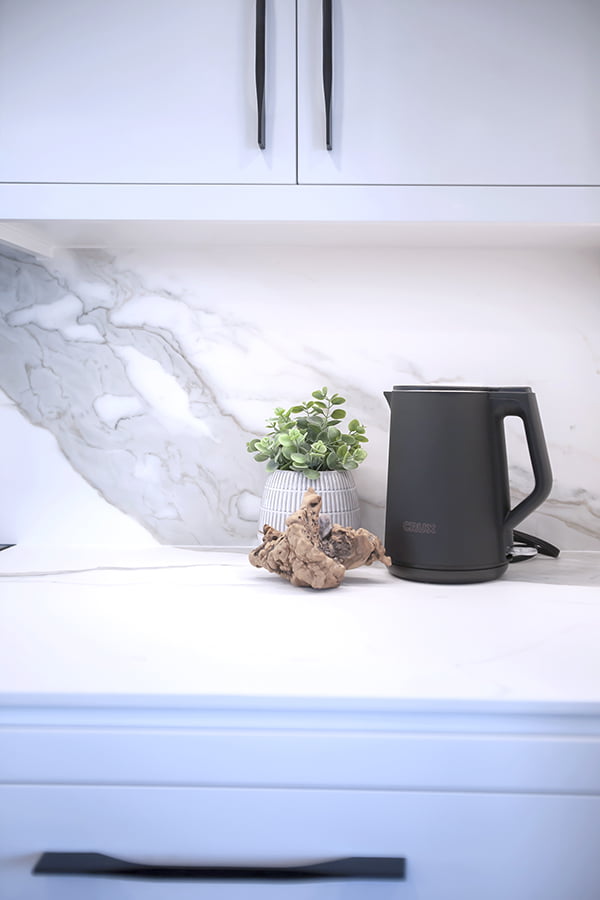
At Gateway Kitchen + Bath we’ve been building cabinets, renovating kitchens and installing countertops in Winnipeg for over 40 years. We believe that finding the best solution to suit your style and lifestyle is a top priority. If you have any questions, or are curious about starting a renovation with us, reach out using our contact form or schedule an appointment with a member of our Design Team!

